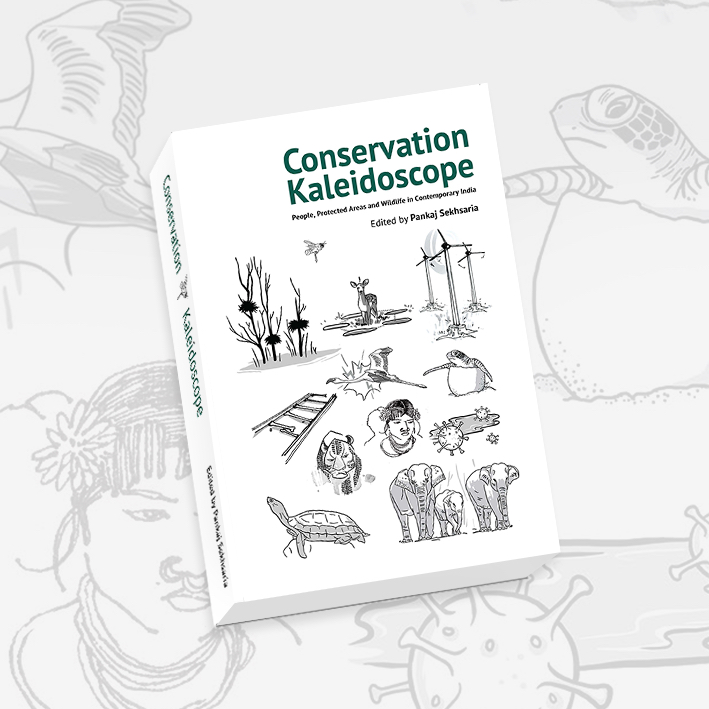Published by: Kalpavriksh, Duleep Matthai Conservation Trust and authors UPFRONT; 432 pages; Price: Kindle Edition ₹325.00, Paperback ₹580.00
What is the future of conservation in modern India? What are its biggest challenges? Can India achieve the goal of rapid economic growth while leaving its wilderness intact? These are questions that every conservation biologist or practitioner grapples with today. Although these questions may seem simple, their answers are layered—like an onion—as Pankaj Sekhsaria points out in the Editor’s note of Conservation Kaleidoscope.
Conservation Kaleidoscope is a retrospective, compiled from over 100 articles published between 2002 and 2020 in the newsletter Protected Area Update that was started in 1994 by the environment group Kalpavriksh. Protected Area Update documented the challenges and developments taking place in India’s wildlife conservation scene. Conservation Kaleidoscope presents a similar spectrum, a kaleidoscope of sorts, with each chapter offering many lenses on how conservation plays out in India.
The book is divided into 14 chapters under broad, interconnected themes. Chapters transition smoothly, starting with laws and governance and moving on to other linked themes. Each chapter highlights facets of the issues under observation through selected published news in the English media and a commentary by the editor to set a context for the reader. Through these commentaries, Pankaj Sekhsaria has been able to lay the foundation for a chronological understanding of conservation activities in India. In chapters such as The Linear Infrastructure Nightmare, Pankaj Sekhsaria has also curated a well-rounded critique of the current model of our political economy by examining both the pertinence and feasibility of reconciling infrastructure development and conservation goals even as they remain largely in conflict with each other.
The book is peppered with anecdotes that sound stranger than fiction. For example, a judgement on the Mullaperiyar dam in 2009 on the Tamil Nadu-Kerala border is cited. To allay fears of the submergence of forests the judgement is quoted as saying “…. elephant herds and tigers will be happier when the water level slowly rises to touch the forest line.” There is hardly a topic that has been left uncovered – from the perils of expanding railways and roads into national parks and sanctuaries, the interdependency of people and wildlife on healthy habitats during an environmental crisis, the evolution of the eco-tourism industry, to the efficacy of wildlife research reports in management practices etc. There are chapters dedicated to charismatic and iconic species like the tiger, the elephant, the rhino, and the river dolphin before summarising trends in phenomena such as human-wildlife conflict, the rise of citizen science, researcher-forest department relationships, etc. from 2007 to 2018. The chapters also acknowledge the successes in conservation efforts, the discovery of new species, and the smaller victories that keep hope alive for the people working in this field.
Overall, Conservation Kaleidoscope is a rich, one-stop source of information for scholars and laypeople. Although the book is heavy on information and can, at times, overwhelm the reader, for anyone interested to learn about wildlife conservation in India, it is a reading journey worth undertaking.
The book is available on Amazon (in both paperback and Kindle versions) and on Flipkart.


 CI is a non-profit, non-commercial portal that aims to facilitate wildlife and nature conservation by providing reliable information and the tools needed to campaign effectively.
CI is a non-profit, non-commercial portal that aims to facilitate wildlife and nature conservation by providing reliable information and the tools needed to campaign effectively.


